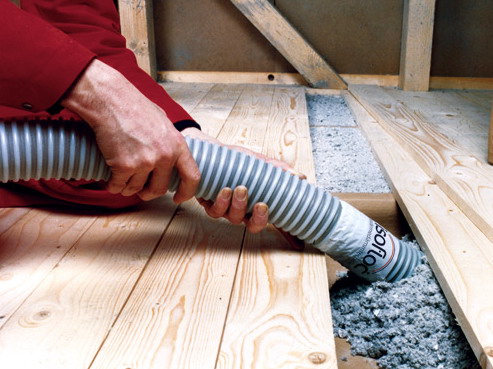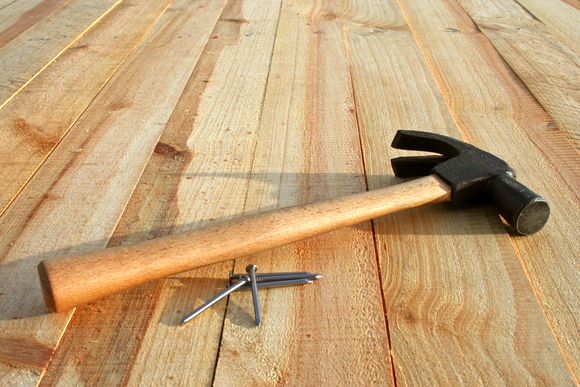How to make the floor of the first floor in a private house: 3 options for the device base
Despite the obvious advantages of living in your own home, not everyone will decide to exchange a comfortable apartment for him. The main reason for this choice is the fear of the need for constant care of the building, plot and communications. In multi-story buildings, most of this work is done by utilities, while in the private sector, the responsibility lies entirely with the owner. And only a few are capable of undertaking independent construction. If you decide on such a crucial step, not being a professional builder, you need to take every step of this difficult task with all responsibility. In this article we will figure out how to properly arrange the floors in a private house. This will not be about decorative coating, but about the choice of floor design, proper waterproofing and insulation.
Content
The choice of material for the device base
Quite often, wood is used for flooring in private housing construction. This is due not only to many years of tradition, but also to practical considerations. This material has several undeniable advantages:
- Durability;
- Environmental friendliness;
- Maintainability;
- Low thermal conductivity;
- Relative ease of installation.
Having settled on this option, it is important to choose the right wood. There are several criteria that the source material must meet in order for the floor to be strong, durable and warm:
- First of all, you need to pay attention to the type of tree. It is best to arrange wooden floors in a private house of oak or ash - such a floor will be the most durable. However, the cost of such material is quite high and not everyone can afford it. The coniferous trees — larch, pine, spruce, cedar and fir — have shown themselves to be excellent.
- Boards and boards must be dry. Their humidity cannot exceed 12%. Otherwise, during operation, they can lead.
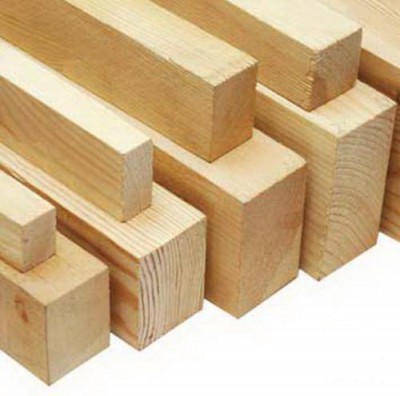
Despite all the advantages of wood, many people prefer to equip a concrete floor. Most often, this choice is due to the durability of the material. Choosing this method, it is important to verify the quality of concrete and precisely comply with the technology of work.
Options for possible designs
First of all, you need to choose the type of construction of your floor. This choice depends on how you plan to operate the building. So, for a country house, which will be used only in the summer, a single plank floor is enough, and for a full-fledged residential building, where you plan to live permanently, you need to choose a well-insulated version.
Option No. 1 - a single plank floor
This is the easiest to use and use flooring option. It is suitable only for summer buildings or housing in regions with a warm climate. If the project of the house provides for the sealing of floor beams into the walls, then the width between them, as a rule, is too large to immediately lay the boards. To ensure the necessary strength of the floor, it is necessary to lay logs - wooden beams.If you plan to install the floor on the supporting poles, you can immediately place the beams at the required distance from each other and do without additional costs for logs.
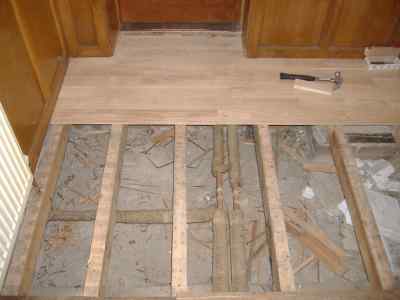
So, we put logs on the supporting beams and set them according to the level with the help of wooden gaskets and wedges. After making sure that all the bars are on the same level, we fasten them to the beams with nails, and then nail the boards to them.
Option number 2 - double plank floor
This version of the floor device will require significantly more cost and effort, but it can greatly reduce heat loss. Draft recommended to be made from coniferous wood. For the sake of economy, you can use an unedged board or a croaker here.
As a rule, I lay a layer of heat-insulating material between the rough and the finishing floor. For these purposes, expanded clay or a mixture of clay with sawdust or straw is used. Of course, you can use modern materials - polystyrene or extruded polystyrene foam. On top of the insulating material, a finishing floor is made from a grooved board.
Option number 3 - concrete floor
The concrete floor device in a private house is divided into several stages:
- First you need to make markup. The easiest way is to use the laser level for these purposes. It is installed on the bottom of the doorway and make marks on the walls. This will be the level of the future gender. To mark the level in the center of the room, nails are driven into the walls according to the marking and thin ropes are pulled.
- Now we proceed to the organization of gravel dumping. This layer will serve as thermal insulation of your floor. Level the soil and clean it of debris. Then we drive in pegs, each of which should be below the level of the future concrete screed by 10 cm. We begin the filling from the wall of the opposite door. When the entire area is filled up, we level and ram the gravel flush with the pegs and remove the latter.
- Then you need to pour a layer of sand, compact it and smooth the surface.
- Correct waterproofing of the floor is of great importance, in a private house a concrete floor is most often protected from moisture with the help of a polyethylene lash with a thickness of at least 250 microns.
- Now you can start pouring. First, we’ll install lighthouses from wooden slats at a distance of 1-1.5 m from each other in terms of level. It is necessary to make this so that the top edge of the rail touches the stretched rope. After that, the marking from the ropes can be removed.
- Fill the space between the two slats with concrete, starting from the far wall. Then we level it with the rule and remove the excess.
Important! For high-quality waterproofing, polyethylene must go to the walls 10-15 cm, that is, above the level of the concrete screed. In addition, if the width of the polyethylene sheet is less than the width of the room, and you use several strips, carefully connect them together using construction tape.
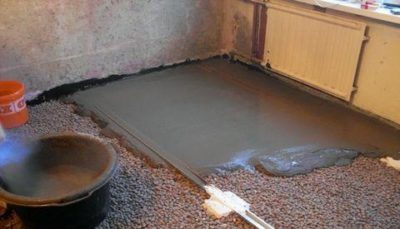
When the concrete "sets", it is necessary to remove the slats, and fill the voids with mortar and level them with a "grater" for plaster. Now we cover the floor with polyethylene and leave it for 3-4 weeks. It is advisable to remove the film once a few days and moisten the concrete. This will allow the material to gain maximum strength.
Subtleties of the device "warm floor"
Do not forget about such a novelty as underfloor heating, because in a private house the installation of such a heating system is most justified. Especially it concerns water floor heatingwhen the room is not heated by radiators, but by means of pipes with a coolant located below the floor surface. It should be noted that device of such a system heating in a building with wooden floors is very problematic and not too effective. This is due to the low thermal conductivity of wood. And here concrete screed allows you to successfully use it.
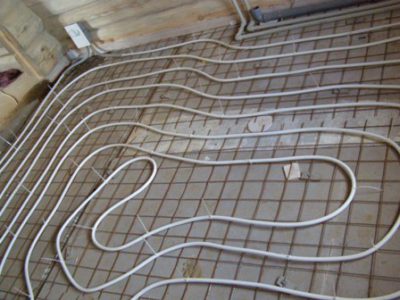
Whatever version of flooring you choose for your home, remember that it is important to strictly follow the technology and not save on materials, even if after finishing work they will not be visible. With poor-quality work on the installation of the subfloor or its heat and waterproofing, even the most expensive decorative coating will soon become worthless.



